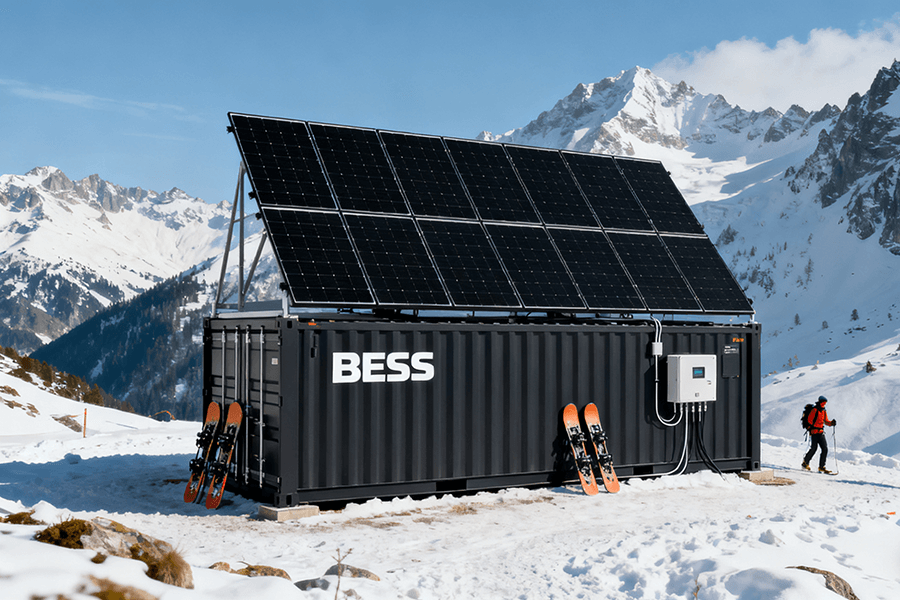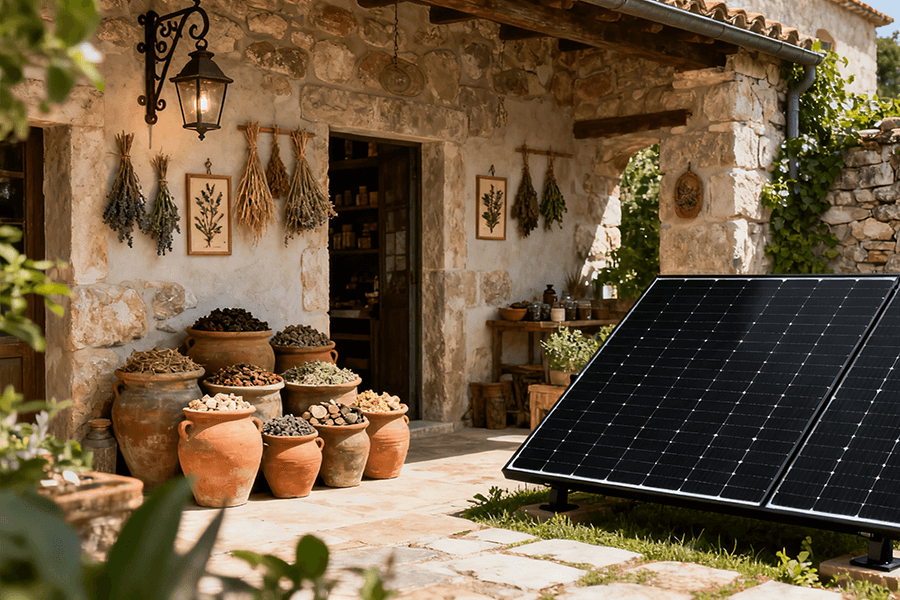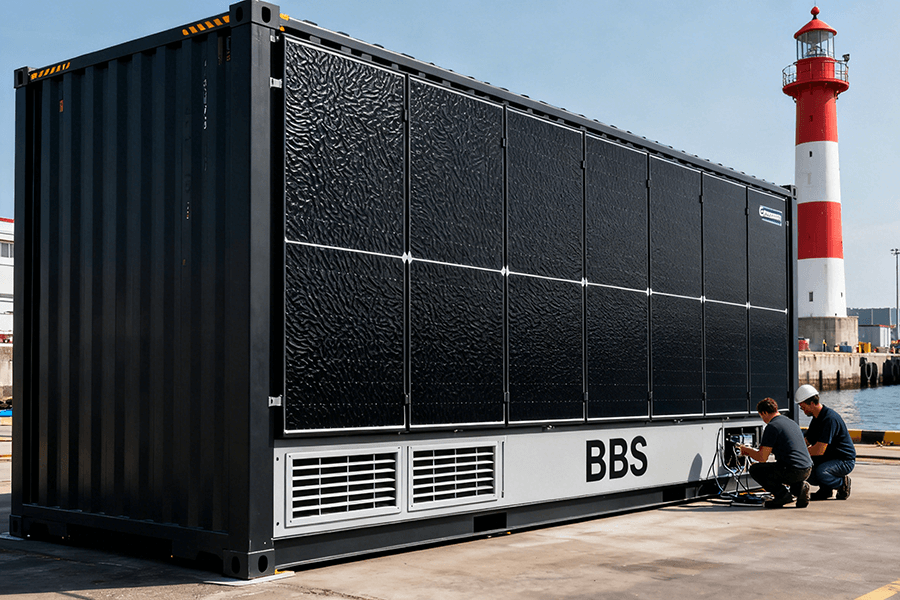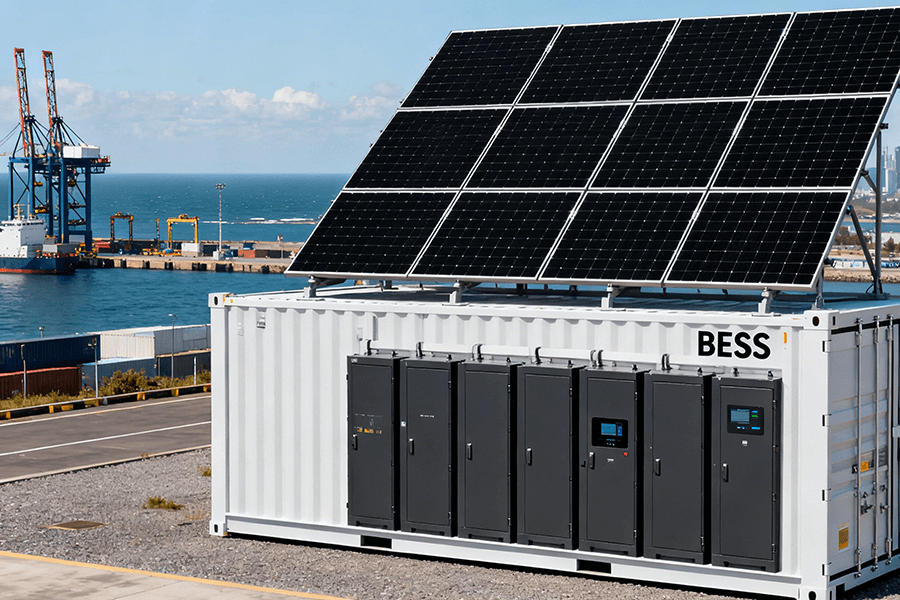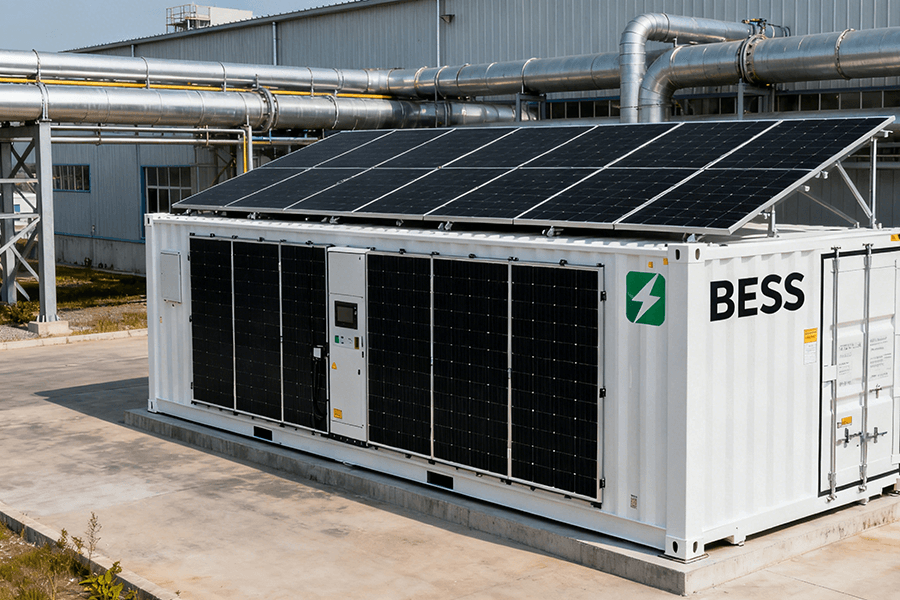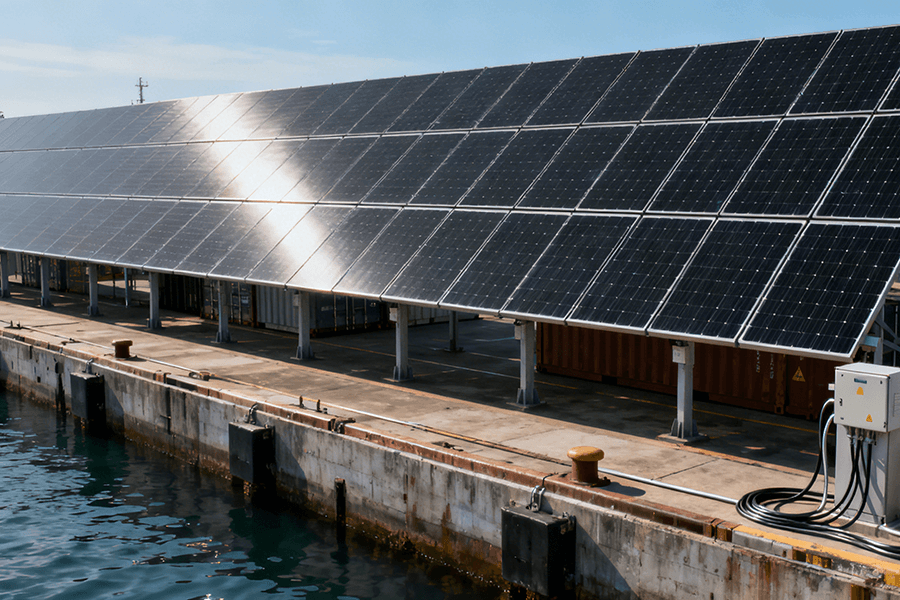
Policy Pressure: When Regulators Say “Green Up”—Or Else
If 2023 was the year EU ports got a “green wake-up call,” 2025 is the year the alarm clock won’t stop beeping. Two policy giants are leading the charge, and neither is here to mess around. These regulations aren’t just paperwork—they’re financial and operational mandates that leave ports with no room for delay.
IMO 2023: The Ship Emission Report Card
The International Maritime Organization (IMO) didn’t just tweak the rules—they rewrote the playbook. Since January 2023, all ships over 5,000 GT must calculate and report their Operational Carbon Intensity Indicator (CII), with ratings from A (top of the class) to E (needs detention).
By 2024, ships with a D rating for three consecutive years or an E rating in any year face mandatory corrective actions, including route adjustments, speed limits, or even temporary bans from high-traffic ports. For ports, this creates a critical incentive: if you can’t offer clean shore power, the best ships (the A-rated ones) will dock elsewhere. It’s like a restaurant losing Michelin-starred chefs because it only serves fast food—your reputation and revenue take a direct hit.
A 2025 IMO survey found that 78% of ship operators prioritize ports with shore power facilities when planning routes, up from 42% in 2022. This shift isn’t just environmental—it’s economic survival.
EU Fit for 55: The Carbon Hammer
The EU’s Fit for 55 package takes “tough love” to a new level. As part of the bloc’s goal to reach carbon neutrality by 2050, maritime emissions must drop 55% from 1990 levels by 2030—and ports are explicitly labeled as “key enablers” of this target.
The package’s most impactful provision? It explicitly hints at including port-related emissions (including shore power generation) in the EU Emissions Trading System (ETS) by 2026. For ports, this translates to a simple equation: No clean shore power = bigger carbon bills.
For major hubs like Rotterdam or Hamburg— which handle 40% of Europe’s container traffic—this isn’t a suggestion. A 2025 study by the European Sea Ports Organization (ESPO) found that ports ignoring Fit for 55 could face ETS-related costs of up to €1.2 million per berth annually by 2030. This isn’t just a regulatory burden—it’s a business imperative.
Port Pain Points: When “Plugging In” Becomes a Headache
Ports didn’t sign up for this chaos. But two core problems have turned shore power from a “nice-to-have” into a operational nightmare—one electrical, one environmental. And the old “solutions” ports relied on? They’re about as useful as an umbrella in a hurricane.
The Grid Punch: Ships as Uninvited Power Hogs
When a large container ship (like a 14,000 TEU vessel) berths and flips on its systems, it draws power equivalent to 10,000 households—all in the span of 30 seconds. This instantaneous “shock load” sends the grid’s voltage swinging like a pendulum, causing:
-
Blackouts for nearby factories or port operations
-
Damage to sensitive port equipment (e.g., crane controls, cargo scanners)
-
Fines from grid operators for voltage instability
In 2024, the Port of Antwerp recorded 17 such voltage disruptions. Each incident cost an average of $230,000 in downtime, equipment repairs, and grid penalties—adding up to nearly $4 million in avoidable losses that year.
The Diesel Stench: Old Habits Die Hard (and Dirty)
To avoid grid chaos, most ports still let ships run on auxiliary diesel generators while docked. Bad idea—really bad. A single Panamax container ship burns 8 tons of diesel per day at berth, spewing:
|
Pollutant
|
Daily Emissions (Per Ship)
|
Equivalent
|
|---|---|---|
|
CO₂
|
25 tons
|
5,000 cars driving 100 miles
|
|
NOx
|
0.3 tons
|
Emissions from a small power plant
|
|
Sulfur Oxides
|
0.08 tons
|
Violates EU air quality standards
|
It’s like solving a trash problem by throwing more garbage in the yard—you’re not fixing the issue, just shifting the mess (and the regulatory blame) to yourself.
The Failed Fixes: Band-Aids for a Broken Leg
Ports tried two old tricks to address these issues—and both flopped spectacularly. Here’s why these so-called solutions are more problem than remedy:
|
Traditional Solution
|
How It Works
|
Why It Fails
|
|---|---|---|
|
Grid Hardening
|
Upgrade transformers, add backup lines to handle shock loads
|
Costs $8M–$12M per berth; takes 2+ years to install; can’t adapt to growing ship power demands
|
|
Small Diesel Backup
|
Use smaller, “cleaner” diesel generators to “buffer” the grid
|
Cuts emissions by only 30%; violates IMO 2023 rules; still generates air pollution fines
|
BESS Container: The Port’s New Swiss Army Knife
If traditional solutions are flip phones, BESS (Battery Energy Storage System) Containers are the latest smartphones—compact, powerful, and ready for anything. This portable battery system, housed in a standard shipping container, addresses both grid stability and emissions in one fell swoop. Here’s how this metal box solves the port’s biggest problems.
Grid Whisperer: 10ms Response to Calm the Chaos
BESS Containers react faster than a cat chasing a laser. When a ship docks and demands power, the BESS kicks in within 10ms—supplying the initial “shock load” so the grid doesn’t even flinch. This is critical because grid operators penalize ports for voltage fluctuations exceeding ±5%.
To put that speed in perspective, here’s how BESS stacks up against other backup systems:
|
Power Source
|
Response Time
|
Grid Stability Impact
|
|---|---|---|
|
BESS Container
|
10ms
|
No voltage swing
|
|
Gas Turbine
|
100ms
|
Minor voltage dip (±2%)
|
|
Diesel Generator
|
2 seconds
|
Significant swing (±8%)
|
The Port of Rotterdam tested a 5MW BESS in 2024 and saw voltage disruptions drop from 12 per month to zero. It’s like having a bouncer who stops fights before they start—quiet, effective, and far cheaper than cleaning up the mess.
Emission Slayer: From Diesel Guzzler to Zero Hero
By replacing diesel generators entirely, BESS Containers cut berthing emissions by 98%—that’s 24.5 tons of CO₂ saved per Panamax ship per day. For a port with 100 ship berths annually, that’s 2,450 tons of CO₂ kept out of the atmosphere—equivalent to planting 68,000 trees.
This isn’t just “greenwashing”—it’s compliance. The Netherlands’ 1.2GW North Sea offshore project (launching 2026) is pairing BESS Containers with solar arrays to power 300,000 households’ worth of shore power. This project is expected to help Dutch ports meet 40% of their Fit for 55 emission targets single-handedly.
Key Win: Ports using BESS for shore power automatically qualify for “A-rated” port status under IMO 2023, making them magnets for high-value shipping clients.
Money Saver: Peak-Shaving Like a Finance Pro
EU electricity prices swing wildly based on demand. Peak hours (9 AM–5 PM, when factories and households use the most power) cost 3x more than off-peak hours (10 PM–6 AM). BESS Containers turn this price volatility into profit by:
-
Charging at off-peak: Buying electricity when prices are lowest (average €0.08/kWh in 2025)
-
Discharging at peak: Supplying power to ships when prices are highest (average €0.24/kWh in 2025)
It’s like buying groceries on sale and reselling them at market price—legal, smart, and profitable. A 5MW BESS can store 20MWh of power, enough to supply 5 ships simultaneously during peak hours.
Economic Math: When Green = Profitable
Decision-makers love numbers—so let’s talk cash. A 5MW BESS Container at a mid-sized EU port (100 ship berths/year, average berthing time 24 hours) delivers hard-hitting financial benefits that go beyond “saving the planet.”
|
Benefit Type
|
Annual Savings
|
Long-Term Gain (5 Years)
|
Calculation Basis
|
|---|---|---|---|
|
Peak-Valley Electricity Arbitrage
|
$300,000–$1.2M
|
$1.5M–$6M
|
€0.16/kWh price difference, 80% utilization
|
|
Avoided Grid Upgrade Costs
|
N/A (One-Time)
|
$8M (Per Berth)
|
$10M average upgrade cost minus $2M BESS investment
|
|
Reduced ETS/Emission Fines
|
$450,000
|
$2.25M
|
€90/ton CO₂ price, 2,450 tons saved annually
|
|
Total 5-Year Benefit
|
–
|
$11.75M–$16.25M
|
Combined savings
|
Crushing Concerns: BESS Isn’t Just for Tech Geeks
We hear the whispers from port managers and CFOs: “BESS is too expensive!” “Will it work with my ragtag fleet of ships?” Spoiler: The cost myth is just that, and compatibility is built in. Here’s how we fix the two biggest worries keeping ports from going green.
The “High Cost” Myth: Subsidies + Flexible Financing
The upfront cost of BESS is often cited as a barrier—but it’s easily mitigated with EU subsidies and flexible financing. Here’s the breakdown:
EU Subsidies
The EU’s Offshore Renewable Energy (ORE) Fund offers grants covering 30–40% of BESS costs for port applications. In 2025, the fund allocated €2.1 billion specifically for maritime decarbonization—up 50% from 2024. Ports in Spain, Germany, and the Netherlands have already secured full 40% grants for BESS projects.
Maxbo’s Financing Plans
We offer three flexible options to cover the remaining cost:
-
0% Interest Installments: Pay over 18 months with no interest—perfect for cash-flow conscious ports
-
Power Purchase Agreement (PPA): We own the BESS, supply power at a fixed rate (20% below grid peak prices), and you pay nothing upfront
-
Lease-to-Own: Lease for 3 years, then take ownership for $1—ideal for testing before committing
With subsidies and financing, the upfront cost drops by 60–80%. It’s like buying a car with a manufacturer rebate and a low-APR loan—suddenly, the “expensive” option is cheaper than doing nothing.
Compatibility: One Box Fits All Ships
Ports don’t have uniform fleets—you might host a 2020s cruise ship one day and a 2000s cargo tanker the next. Our BESS Containers are designed to speak every ship’s “language” with:
Standardized Interfaces
All units come with IEC 61850-compliant interfaces—the global standard for maritime electrical systems. This means they work with every major ship type, from container vessels to cruise ships, without custom wiring.
Custom Adapters for Legacy Ships
For older ships (pre-2010) with non-standard connections, we provide plug-and-play adapters that install in 30 minutes. The Port of Lisbon used these adapters to power a 2005-era bulk carrier with our BESS—no ship modifications required.
It’s like a universal charger for the maritime world—no more fumbling with different cables or hiring electricians for every ship.
Our Solution: Maxbo Solar’s BESS—Built for Ports, By Experts
At Maxbo Solar, we don’t just sell BESS Containers—we build port-specific solutions. As a team of marine engineers and energy experts with 15 years in the maritime industry, we know the unique challenges EU ports face: salt spray, tight berths, unpredictable weather, and ever-changing regulations. That’s why our marine-grade BESS is designed to be tough, smart, and tailor-made for your needs—not a one-size-fits-all box.
Built to Survive the Sea (and the Weather)
Ports are harsh environments—saltwater, high winds, and extreme temperatures (from -10°C in Hamburg winters to 40°C in Barcelona summers) can destroy standard equipment. Our BESS Containers are built to last with:
-
316L Stainless Steel Housing: Resists corrosion from salt spray—tested to last 15+ years in coastal environments
-
IP68 Rating: Waterproof and dustproof—can withstand temporary submersion (critical for storm-prone ports like Rotterdam)
-
Climate-Controlled Interior: Maintains battery temperature between 15–25°C, ensuring 95% efficiency year-round
We tested one of our units in the North Sea during a storm last winter: winds hit 120 km/h, and waves splashed over the berth. The BESS kept running while the port’s crane shut down. It’s not just a battery—it’s a marine warrior.
Smart Tech That Works While You Sleep
You don’t have time to babysit a battery. Our proprietary Maxbo Connect monitoring system (accessible via phone, tablet, or laptop) does the heavy lifting with:
Real-Time Monitoring
Track power use, battery level, and efficiency from anywhere. Set custom alerts for low battery or abnormal performance—you’ll get a text and email if something needs attention.
AI-Powered Peak Prediction
The system analyzes 12 months of historical data to predict peak electricity hours and ship arrival times. It automatically charges the BESS at the cheapest possible times—no manual input needed.
Automated Compliance Reporting
It generates IMO and EU-compliant emission reports with one click. No more spending weeks compiling data for regulators—just download the PDF and submit.
The best part: 95% of issues are fixed remotely. If the system detects a problem, our tech team can troubleshoot and resolve it from our headquarters in Barcelona—no more waiting for a technician to sail in.
We Walk the Walk (With Real Results)
We’re not just talking—we’re delivering results for EU ports. The Port of Barcelona installed our 3MW BESS in Q1 2024, and the results speak for themselves:
-
97% emission reduction at berths—down from 22 tons of CO₂/day to 0.66 tons
-
$920,000 in first-year electricity savings—exceeding their projected $750,000
-
Zero grid disruptions—down from 8 per month before BESS installation
-
IMO A-rated port status—attracting 15% more A-rated ships in Q3 2024
“We thought going green would be a financial burden,” said Carlos Mendez, Port of
The Future of Ports Is Bright (and Powered by BESS)
By 2030, the EU aims for 30GW of offshore solar capacity—and BESS Containers will be the backbone of that revolution . For port managers, this isn’t just about meeting regulations—it’s about turning green into a competitive advantage. Ships will choose your port because you offer clean power. Investors will back you because your ROI is proven. And regulators? They’ll stop knocking on your door.
At Maxbo Solar, we’re ready to help you make that transition. Our BESS Containers aren’t just products—they’re partnerships. Visit www.maxbo-solar.com today to get a custom quote, or give us a call. Let’s turn your port’s green goals into green results—no cape required.

